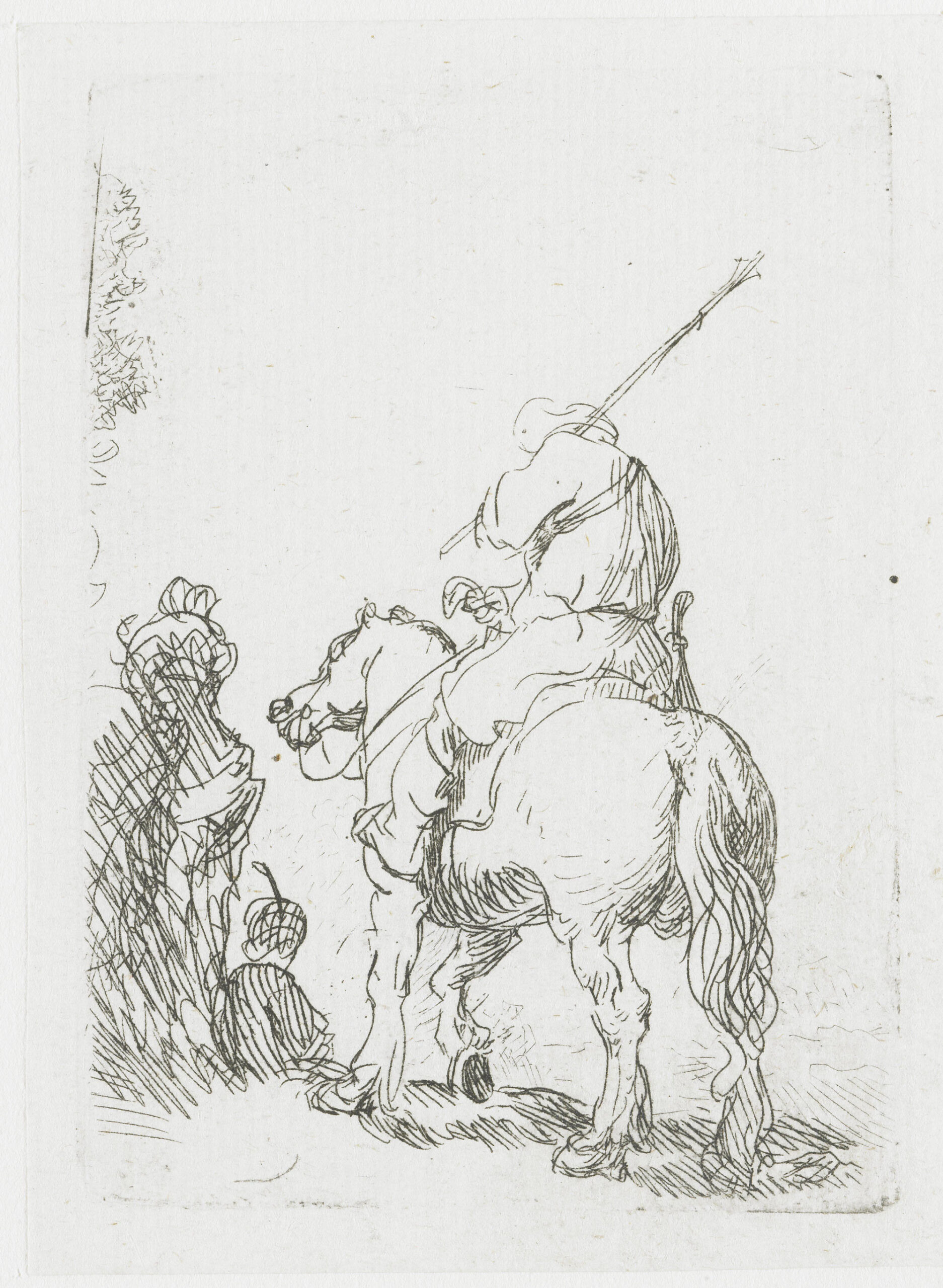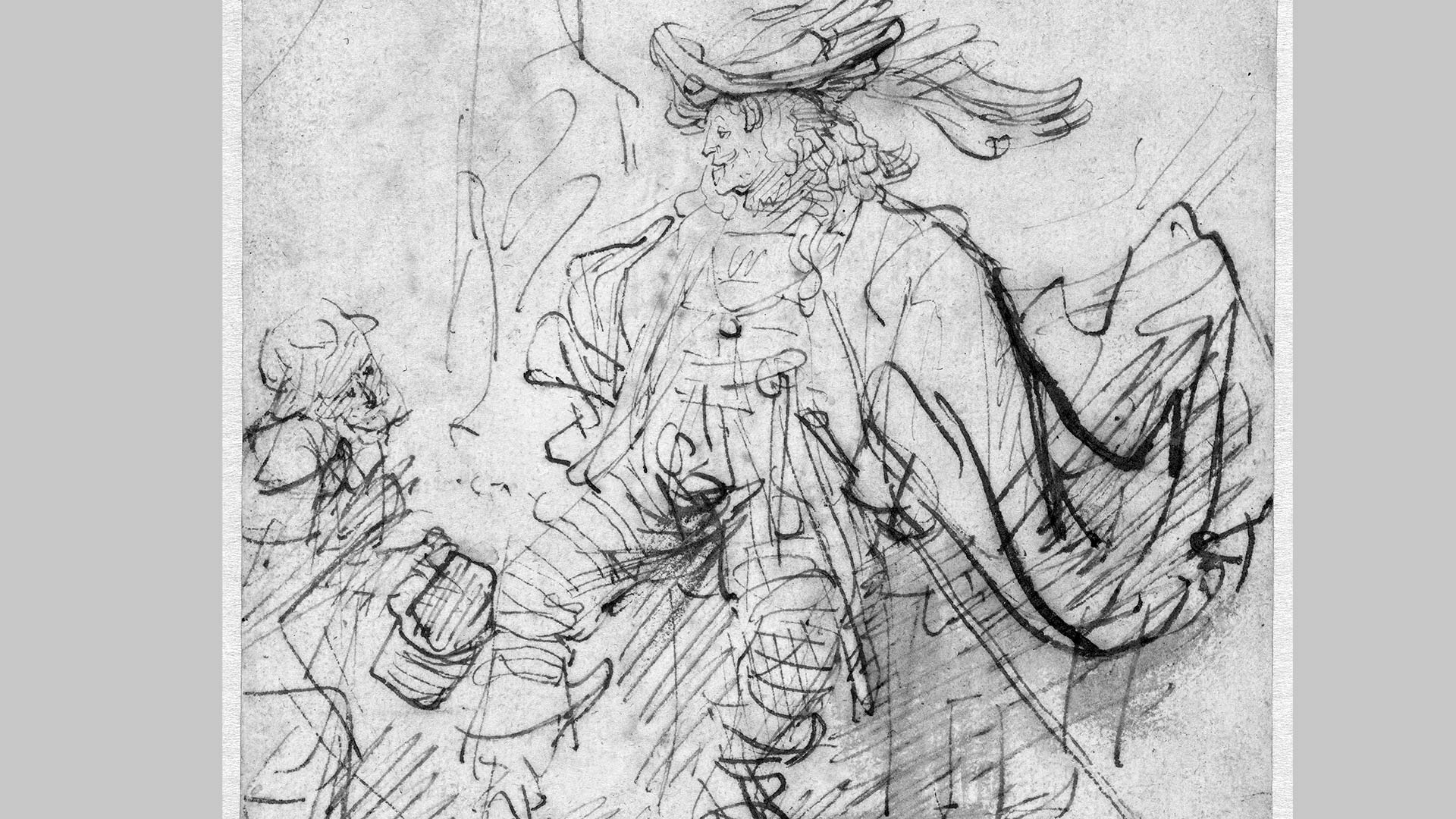Work with line bundles
Rule 2
workload …
Line bundles allow spontaneity.
When you start with line bundles and later narrow down the form, you start like all masters do
Understanding the whys of the approach with the line bundles. For this we get a closer look to the artists.
Watch the film to learn about the second rule.
Script
Hello. Happy sketching.
I’m explaining the second rule. The second rule is „work with line bundles„.
So if you have a line, you. Maybe have another line, …. second or third line, …. and so on. Those are line bond bundles.
This is his sketch by Rembrandt. Let’s take a closer look at it and dive in: Where does he work with line bundles? I make an example. Maybe the easiest way to look at it or relax. I have one stroke, another stroke, and a third stroke. I have one stroke, another stroke, and a third stroke here. I have one stroke. I have many strokes here. I have even more strokes here. So those are line bundles.
The second rule goes hand in hand with the first rule, while we let the line flutter with the first rule, we balance it out with the second rule.
Let’s have a closer look here at the horse’s head. While we let the line flutter with the first rule, we balance it out with a second. …. Just a moment. Balancing out the first. Maybe it was the first. Then I have a second one here, a third one here, a fourth one, and a fifth one here. This is what is meant.
So if we work with line bundles of strokes, we do so in such a way that the second stroke compensates for the shortcomings of the first stroke. Let’s assume this was the first stroke and this the second stroke. Maybe this then the head of this horse wasn’t nicely drawn, so he balances out. Maybe those are hairs. Maybe this is the eye. I don’t know. This is the nose. Whatever.
We now have different lines that show us this, maybe the head. And we have an indicator. Maybe this is the eye. Or maybe here is the eye. I don’t know. It doesn’t matter because nobody asks.
The second stroke is therefore an agile response to the form of a stroke, to the first stroke present. This makes it clear that the second stroke cannot run parallel or in the same place. The second stroke acts as a balancing response here as well. We have a stroke, a stroke, and a stroke. The second one was too tight. So maybe he added the third one here. Or in the best case, the second stroke visually balances the first one out.
As I explained, bundles of strokes give the observer another possibility to the right picture emerged in the inner eye.
So I have a picture of a horse’s head in my brain and I bring in now my picture of the horse’s head. I know horses have ears. Maybe they look like this. Maybe they are longer and they are too short here. But no matter, because there is not one finished line. Really clean line. I can bring in my inner image of a horse’s head or ear.
Let’s have a look next at this tomato. Okay, we have this green thing here. And we have these beautiful samples here.
Finding the right shape is a great challenge. With a first fluttering stroke and then with several more strokes that limit the shapes from a bundle of lines, we let the picture emerge while sketching.
I show you what I mean. I hold the tomato here. And now I want to draw the tomato maybe a little bit darker. I do have not the same point of view as you have, so it will be a little bit different. I start with this inner part here. Oh, I have the wrong tool… I need a six B pencil.
Okay, I start with the inner part here. Maybe it’s too big. Yeah, that’s far too big. With the inner part here I start and it’s going down like this. I have in the inner round here. And now I have all the bracts going out here in different directions. So okay, put it here again. This goes in this direction, this one goes in this direction. I just point the directions and not the whole leaves or bracts. Okay. And now I’m starting to sketch them with more than one line. I let them appear because I’m not sure where they are. But they are coming while I am sketching. So I need this part here. And this goes a little bit in this direction. Maybe I make it a little bit like this. So this is all this green part here. And now it’s coming, so I do not know how this is going. Oh, this was a little bit too bold. How this is coming here and here. And this one is the point I want to go to. This one is more round. Maybe this inner round is more stock.
(07:02) Okay, now you have another point of view so it won’t look very similar. I do the tomato here and even the round form, the round shape, I’m going to narrow it down with different lines. Maybe a little bit more contrast here. Okay. And so I have sketched my tomato … with the first fluttering stroke and then with several more strokes that delimit the shape. I’m going to narrow down the form in the same way. The surrounding lines in the bundle of lines create a reference to the surroundings and the object is perceived together with the space.
This means I have a little bit of shadow beneath the things. So I can add this here and I’m going to see it as being in the space.
Several lines in the bundle have an important information value for the creation of the sketch because they delimit the object without closing it off to the outside and make it easier to find the form.
The other lines look for further response representations and just open visual possibilities. Now you can bring in your perception and you everybody have an experience of how tomatoes look. And then we have line bundles and we have drawn an object with them.

Turbaned soldier on horseback, Rembrandt van Rijn, c. 1629
etching, h 81mm × w 58mm (Rijksmuseum.nl)
Why do we work with lines bundles?
Dash bundles give the viewer a further opportunity to create in his mind‘s eye the „right image“. Likewise those lines are linked to the environment and the object is perceived in its surroundings. These several lines in the dash bundle have an important informational value for the formation of the imagination. They close off the object from the outside, without completing it, and the bundles facilitate the form-fi nding. The outer lines are looking for more inner images and thus open up visual options.
Go to the Rijksmuseum Amsterdam
Below: Seated Actor in the Role of Capitano, Rembrandt van Rijn, c. 1634 – c. 1636
pen and brown ink, with brown wash, h 182mm × w 153mm Catalogue entry
Capitano, a character in the Italian commedia dell’arte. The woman offers him an open bag. The Dutch word for ‘bag’ also meant ‘prostitute’.

If you want to learn drawing it is always important to look at drawings from masters or professionals. During this course, you will always find links to follow that lead you to masterpieces of museums all over the world.
So lean back and enjoy all the beautiful drawings and sketches, sketchbooks or even drafts of thoughts.
Here we start with a hand full of outstanding artists sketchbooks from the Morgan Library & Museum in New York www.themorgan.org
Lookbooks of the Morgan Library & Museum
Sketchbook by Gherardo Cibo | The Morgan Library & Museum Online Exhibitions
Annibale Carracci’s The Life of St. Paul | The Morgan Library & Museum Online Exhibitions
Painted with Words- Vincent van Gogh’s Letters to Émile Bernard | The Morgan Library & Museum Online Exhibitions
Leonardo da Vinci and the Codex Huygens | The Morgan Library & Museum Online Exhibitions
Hubert Robert’s Roman Sketchbook | The Morgan Library & Museum Online Exhibitions
Pirro Ligorio’s Life of Hippolytus | The Morgan Library & Museum Online Exhibitions
Paul Cézanne Sketchbook | The Morgan Library & Museum Online Exhibitions
Take your time and invest 45 minutes in looking closer. Here are some questions not only to stare at the sketches but dive in deeper.
- What was the intention of the sketcher to tell visually?
- Name all the objects you can scope.
- Where is your eye led to in the sketch?
- Which part of the surface let the artist untouched?
- If the sketch had a rhythm, how would it be?
- If this sketch had a sound, how would this sound be?
- Think about the speed of the pen on the paper, and what kind of sound or noise did it make on the paper?

